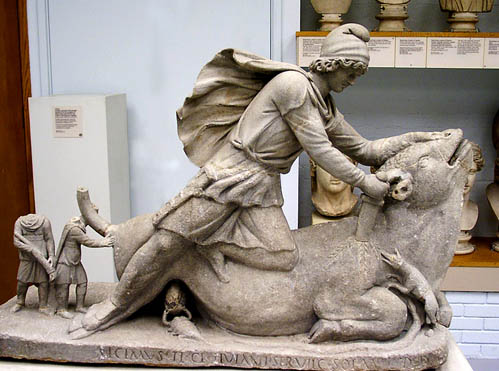Mythraism, a mystery religion originating from ancient Persia, has often been linked to the Roman Catholic Church due to certain similarities and influences that exist between the two. We will explore the connection between Mythraism and the Roman Catholic Church based on historical evidence and scholarly research.
Before delving into the similarities between the two religions, it is important to understand their individual backgrounds. Mythraism, founded in Persian mythology, centered around worshipping the god Mithras, who represented the sun and was associated with fidelity and war. The religion spread to the Roman Empire during the first century AD, overlapping with the rise and spread of Christianity.
One key aspect that connects mythology and the Roman Catholic Church is the idea of a “dying and rising” god. In both religions, the central divine figure undergoes a death and subsequent resurrection, symbolizing spiritual rebirth and salvation for believers. Mythraism depicts this through an image of the god Mithras slaughtering a bull.
Another point of contact can be found in the sacraments and rituals practiced by both Mythraism and the Roman Catholic Church. Mythraic worshippers partook in communal meals as a form of initiation and spiritual bonding, which bear similarities to the Catholic Eucharist, where believers consume bread and wine representing the body and blood of Christ. This shared practice suggests that Mythraism may have potentially influenced the development of certain Catholic Sacraments.
Additionally, the architectural design of Mythraic temples and Catholic cathedrals exhibits resemblances. Mithraic temples were typically constructed underground, with narrow entrances leading to large central halls, where the initiation ceremonies occurred. Similarly, Catholic cathedrals often have long, narrow naves leading to a high altar, creating a sense of grandeur and spiritual ascent for worshippers.
Moreover, the evolution of Christianity within the Roman Empire occurred in a context heavily influenced by various religious practices, including Mythraism. As Christianity spread, it inevitably absorbed and incorporated elements of local pagan traditions, which could explain the presence of certain Mythraic influences within the Catholic Church.
To conclude, Mythraism and the Roman Catholic Church share certain aspects, such as the concept of a dying and rising god, sacramental practices, architectural parallels, an

